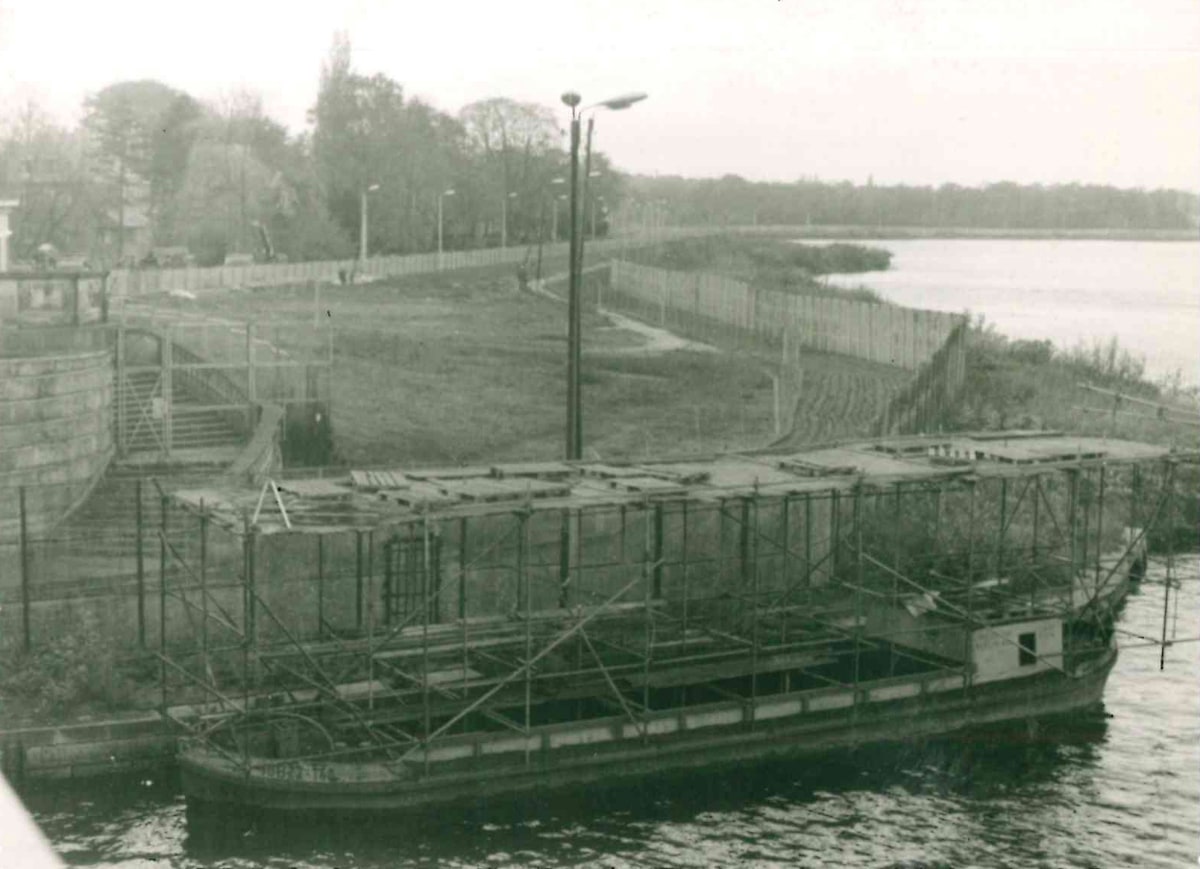The border area
at Jungfernsee lake
 Repair work on the border crossing at Glienicke Bridge with a view of the frontier barriers - Photo: Privatbesitz
Repair work on the border crossing at Glienicke Bridge with a view of the frontier barriers - Photo: Privatbesitz
Schwanenallee was likewise incorporated into the border area of the GDR adjacent to West Berlin after the construction of the Wall. The East German border troops were responsible for the expansion and perfection of the border facilities. The City of Potsdam, however, was called upon by the military to finance certain infrastructure measures, such as maintaining the shoreline of Griebnitzsee lake.1
Those who were still allowed to live in this frontier zone were carefully vetted by the SED. Local residents received regular visits from political officers, and their »grievances« were discussed with the volunteer border militias of residential districts and factories. Every three months the Potsdam City Council compiled reports on the political-ideological views and the supply situation of local residents in the border zone, on the level of order there and the condition of border facilities. One of these reports, from 1987, indicates that not less than 1,486 family discussions »on political and personal problems for [the purpose of] improving living conditions and guaranteeing order and security in the border area« took place in the border area of the City of Potsdam.2 These primarily served to keep tabs on local residents. For regime-loyal residents, the presence of strict surveillance made life near the border relatively peaceful. Another report of the Potsdam City Council even complained about local residents – including members of the police and security forces – repeatedly leaving their doors unlocked, which allegedly offered shelter to individuals trying to escape to the West. According to the report, these residents viewed their property as part of the »guarded border area« and thus considered it safe from intruders.3
Soviets troops were also a constant presence thanks to the close proximity of Soviet Military Townlet No. 7 next to the New Garden as well as the nearby barracks. With the creation of the Nedlitz border crossing at Bertini strait in 1964 and the boat company moving to Bertinistrasse soon afterwards, the area around Jungfernsee had become an important strongpoint for securing the border of the GDR from the perspective of East German border troops and the Stasi.
In 1968, two buildings at the end of Schwanenallee were excluded from the border area for security reasons. They could henceforth be reached without a permit via Tizianstrasse from the south. Their occupants, however, were completely cut off from their remaining neighbors on Schwanenallee due to the border fortifications. In 1982 a border officer living on Schwanenallee petitioned Potsdam City Council to have the whole of Schwanenallee excluded from the border area. The petition was rejected for security reasons.
A memorandum of Major-General Erich Wöllner, head of the Central Border Commando, to the chairman of the Potsdam District Council finally announced the dissolution of the border area in November 1989.
»I would hereby like to inform you that as of November 13, 1989 at 12 p.m. the border area at the state frontier of the GDR to (WEST) Berlin is scheduled to change. (...) As part of this change, all residential areas, factories, facilities and garden colonies within the border area shall henceforth be excluded from this border area provided they are not in the action strips of border troops.«4
Sources:
- Vgl. Heinz Müller (SED), Stellvertreter des Oberbürgermeisters für Inneres, Stadt Potsdam, Betreff: Bericht über die Erfüllung der materiellen und finanziellen Forderungen der Grenztruppen zur Unterstützung der Grenzsicherung im Gebiet der Stadt Potsdam per 31.12.1987, Datum: 04.01.1988, in: Stadtarchiv Potsdam Soz/7245 B. 1.
- Heinz Müller (SED), Stellvertreter des Oberbürgermeisters für Inneres, Stadt Potsdam, an: Rat des Bezirkes Potsdam, Manfred Selinger, Stellvertreter des Vorsitzenden für Inneres, Betreff: Einschätzung der Leitungstätigkeit des Rates der Stadt und der Arbeit seiner Fachorgane zur Gewährleistung einer hohen Ordnung und Sicherheit im Grenzgebiet bzw. grenznahen Raum sowie der Verbesserung der Lebens- und insbesondere der Wohnbedingungen der Grenzbevölkerung im Jahre 1987, Datum: 04.01.1988, in: Ebenda, Bl. 3.
- Vgl. Heinz Müller (SED), Stellvertreter des Oberbürgermeisters für Inneres, Stadt Potsdam, an: Oberbürgermeister Wilfried Seidel, Betreff: Zuarbeit zur Beratung der KEL [Kreiseinsatzleitung, d. Vf.] am 26.09.1988, Datum: 13.09.1988, in: Ebenda, Bl. 32.
- Erich Wöllner, Kommandeur Grenzkommando Mitte, an: Vorsitzender des Rates des Bezirkes Potsdam Herbert Tzschoppe, Datum: 12.11.1989, in: Stadtarchiv Potsdam Soz/3661 Bl. 123.
Panorama photos
of the border to West Berlin
In 1966 the »operational work« section of the East German border troops made a photographic panorama of the border around West Berlin. The picture gallery shows photos taken by Border Regiment No. 48 between Glienicke Bridge and Swan Bridge at the New Garden. The border facilities were continually expanded and perfected in the ensuing years.


















